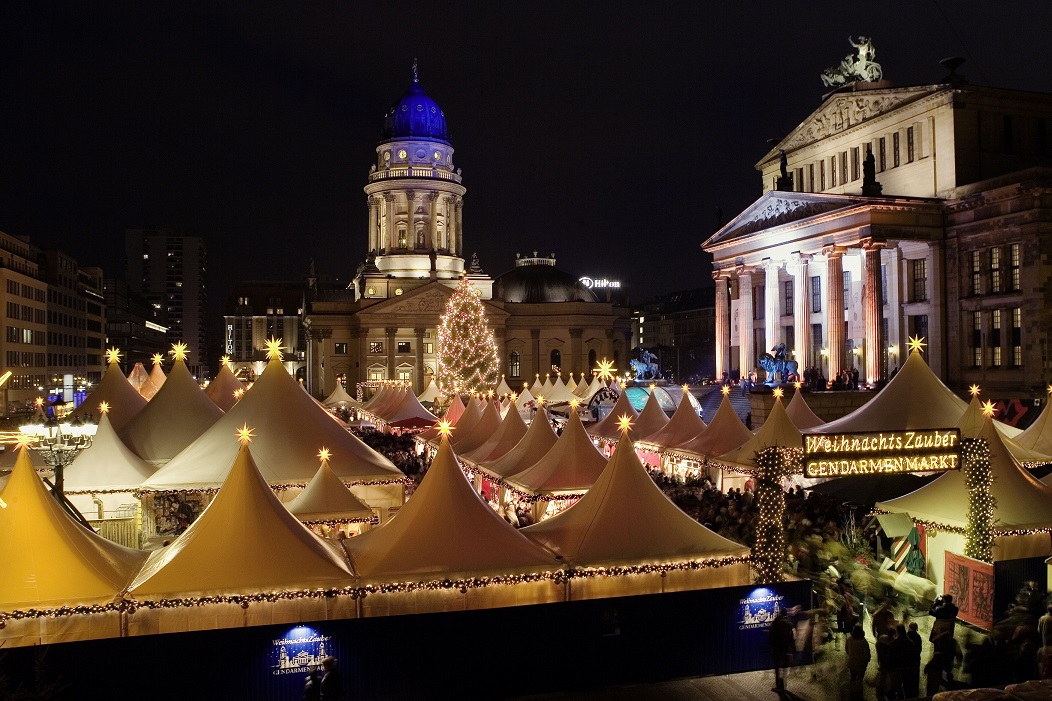Taking the kids to Germany’s famous Christmas markets


By Eileen Ogintz
Tribune Content Agency
Check out the Prune People!
You’ll find them at Frankfurt’s Christmas Market — Germany’s oldest, locals claim, which dates back to 1393, though those in Nuremberg dispute that. The tradition of having a big Christmas tree didn’t make its appearance until the beginning of the 19th century, back when locals typically bought their holiday toys at the Christmas Market. Later, kids would raise money to give their teachers giant Santa Claus gingerbread figures.
Nuremberg’s famous Christmas Market, dates to the beginning of the 17th century. Today you’ll find some 2,500 Christmas Markets around Germany — 60 in Berlin alone — that are open mid- to late-November, typically closing right before Christmas. Some, however, re-open right after the holidays for a few more days.
Some markets are in unique spots. For example, the small wooden hut village that comprises the Ravenna Gorge market in the Black Forest, about an hour from Freiburg, is surrounded by the gorge’s steep cliffs under a 130-foot railway viaduct. The popular market at Fort Konigsstein in Saxony has major kids’ attractions, including a fairytale grotto in one of Europe’s biggest fortresses.
http://takingthekids.com/holiday-lights-our-guide-to-the-best-and-brightest/
Germany has the most holiday markets in Europe, drawing tourists from around the world, though you’ll also find them a popular holiday tradition in neighboring Austria, Switzerland and Czechoslovakia. German-style holiday markets are also very popular in American cities, including Baltimore where the Christmas Village is modeled after the famous Christkindl Market in Nuremburg, Philadelphia, Chicago, Milwaukee, and Denver and in smaller cities, including Bethlehem, Pa., where the market draws thousands every holiday season.
We found each market we visited in Germany unique and charming as we sailed down the Main River last December aboard a special family Uniworld Christmas Market River Cruise from Frankfurt to Nuremburg (kids are half price on special family sailings), which stops in towns, including Bamberg, Wurzberg and Rothenburg, which also boasts a bona-fide Christmas Museum filled with historic decorations. (Read more about the cruise and the industry’s new efforts to offer family-friendly itineraries here.)
The custom of the markets dates back to when — once the main river froze — people weren’t able to get any supplies, local guide Rebecca Hajek explained to Uniworld passengers. These markets began, she said, to make sure people wouldn’t be left without enough food to celebrate Christmas, selling lots of preserved meat, nuts and cookies that remain popular today.

The smiling salespeople seemed to be having as much fun as we were as we made our way from one traditional wooden hut to the next under the holiday lights, buying cookies in one and perusing nutcrackers in the next. The kids aboard our cruise were enthralled. Certainly these are noisy places with so many happy people and affordable souvenirs and snacks, like big German pretzels or grilled sausages, a welcome respite after touring churches, fortresses and castles.
It was fun the grown-ups too. They sipped Gluwein, the traditional hot mulled wine, along the way and collected ceramic Gluwein cups as souvenirs, each cup different at each market and sold for just a few Euros (less than $4) beyond the cost of the drink.
Every region has its own variation of Gluhwein, as well as treats and crafts. Nutcrackers, for example, were invented in the Ore Mountains in Saxony and today the Striezelmarkt in Dresden and the Christmas market in Nurnberg are the most well-known Christmas markets for wooden ornaments and especially the nutcracker soldiers. At the Bamberg market, a historic printing center, there are tiny cookie cutters in every shape. In Munich, there are handmade Glockenspiele music boxes because the city’s most iconic site is the huge Glockenspiel in Marienplatz.
The prune people — Zwetschgemannia — are fashioned out of prunes, sticks, figs and nuts and date back to Medieval times when children would play with them in dollhouses, only to be taken out at holiday time. They were prominently displayed among the toys and decorations — everything from tiny German half-timbered houses, nutcrackers and carved Santas, handmade lace, advent calendars and wreaths, traditional candle arches (the tradition dates back to German miners hanging their pit lamps at the mine entry the last shift before Christmas) and all varieties of tree decorations. (The German town of Lauscha is the birthplace of Christmas tree decorations.)
It was easier to resist souvenirs — we were mindful of the weight of our luggage — than the special holiday food — local Hutzelbrot spiced fruit bread and Lebkuchen, gingerbread topped with chocolate, sugar, white chocolate, as well as a wide variety of local sausage. The 150-stand Nuremburg market alone attracts 2 million visitors a year and there is even a Christmas Market solely for children, complete with a carousel and a few other rides.
We sampled every variety of candied almonds, bratwurst and sauerkraut, the local marzipan cookies (marzipan figures traditionally are exchanged at New Year’s), and Schmalzkuchen, popular diamond-shaped “fluffy pillow” pastries sprinkled with powdered sugar and popular all over Germany.
A visit even proved an ideal antidote to jetlag after we arrived in Berlin. We wandered over to the traditional Christmas Market at the beautiful Gendarmenmarkt square downtown. Others may be trendier, even focusing on sustainable gifts, but this market was iconic and close to our hotel.
The Konzerthaus and the French Cathedral were lit up with the market’s small tent city built in between with vendors selling crafts, sausages and, of course, Gluewein. The holidays were a few weeks away, but no one seemed stressed. People were smiling and joking even while waiting in line to get inside.
Maybe we can all de-stress the holidays with a visit to a local holiday market. Have a glass of Gluwein for me.
(For more Taking the Kids, visit ttk-old.o2dev.net and also follow “taking the kids” on www.twitter.com, where Eileen Ogintz welcomes your questions and comments.)
© 2016 EILEEN OGINTZ
DISTRIBUTED BY TRIBUNE CONTENT AGENCY, LLC.
